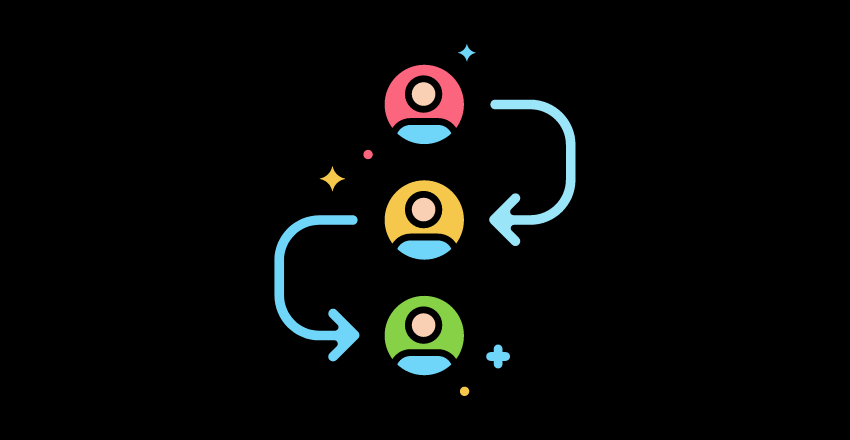
Is FastAPI good for API Development? Embark on a journey exploring FastAPI’s prowess and understand why developers are raving about it.
A New Kid on the Block: FastAPI’s Arrival
Let’s take a step back to 2018. A promising new web framework made its debut – FastAPI. It was, developed by Sebastián Ramírez, emerged from a desire to build APIs faster and more efficiently. Remember, at this time, Flask and Django ruled Python’s world.
So, FastAPI had to offer something better to stand a chance.
FastAPI’s Core: Starlette for Web Routing and Pydantic for Data Validation
FastAPI is built on Starlette for web routing and Pydantic for data validation. These two libraries, although not as popular as Flask or Django at the time, had distinct advantages. Starlette is an asynchronous framework, which means it can handle concurrent requests without breaking a sweat.
Pydantic, on the other hand, provides data validation through Python type annotations. Both libraries played a crucial role in shaping FastAPI into a powerhouse.
FastAPI’s Learning Curve: What to Expect

Learning a new framework can be daunting, but FastAPI’s simplicity makes it more approachable. If you’re already familiar with Python’s type annotations and async features, you’ll feel right at home.
However, if you’re new to these concepts, there will be some learning involved. But don’t let this discourage you! The FastAPI community is growing, and there are excellent resources available to help you along the way.
Pro tip: The official FastAPI documentation is a great starting point. It’s comprehensive and provides examples that make complex concepts easier to understand.
Real-Life Use Cases: Seeing FastAPI in Action
I’ve had the pleasure to work with FastAPI on a couple of major projects. One notable instance was while developing a real-time analytics platform. We needed something fast, efficient, and capable of handling high volumes of concurrent requests. FastAPI was a perfect match.

FastAPI’s asynchronous nature enabled us to handle multiple simultaneous requests without clogging the server. The platform was able to receive, process, and respond to incoming data in real-time, which was a significant win for the project.
Additionally, the automatic generation of OpenAPI and JSON Schema definitions made API documentation and testing incredibly seamless. We saved countless hours, which we could then spend on more critical aspects of the project.
Key takeaway: FastAPI’s capabilities can be beneficial in real-world, high-demand scenarios, such as a real-time analytics platform.
Growing Adoption: FastAPI’s Rise to Fame
FastAPI’s adoption didn’t explode overnight. But, its ease of use, performance, and developer productivity attracted more and more developers. In 2019, just one year after its inception, FastAPI had become one of the fastest-growing Python frameworks, according to GitHub stats.
Pro tip: If you’re a developer who values productivity and performance, give FastAPI a try!
FastAPI’s Ecosystem: Exploring Third-Party Integrations
FastAPI might not have as extensive an ecosystem as Django or Flask yet, but it’s growing steadily. You can find third-party integrations for common needs like authentication, database access, and task queues.
For instance, Tortoise-ORM is an excellent tool for async database operations. FastAPI-Users is a popular library for user registration and authentication.
Key takeaway: Although FastAPI’s ecosystem isn’t as mature as that of Django or Flask, it’s rapidly expanding, with third-party libraries for many common needs.
Under the Hood: FastAPI’s Performance and Productivity Benefits
FastAPI isn’t just known for its simplicity. It’s also highly efficient. This performance is, in large part, due to its asynchronous capabilities. Asynchronous programming in Python isn’t new. However, FastAPI makes it easy to use and scale.
FastAPI also brings a new level of developer productivity. By using Python type annotations, FastAPI generates interactive API documentation automatically. This feature is a godsend for developers, reducing the need for manual documentation and making API testing a breeze.
Comparison with Contemporaries: Flask and Django
FastAPI vs. Flask and Django – it’s a common comparison. Each has its merits, but there are areas where FastAPI shines. Let’s go over some of them:
- Performance: Flask and Django are synchronous, meaning they don’t handle concurrent requests as well as FastAPI.
- Ease of use: FastAPI’s automatic API documentation reduces a lot of manual work.
- Data validation: Pydantic in FastAPI makes data validation simple and clean.
However, Flask and Django have larger communities and more third-party libraries. So, for some projects, they might still be a better fit.
Key takeaway: When choosing between FastAPI, Flask, and Django, consider your project’s specific needs.
The Race: FastAPI vs Flask Performance Benchmark
When considering a framework for your next project, performance can be a critical factor. Let’s look at a FastAPI vs Flask performance benchmark.
FastAPI takes the lead in performance due to its asynchronous nature. It can handle a larger number of requests per second compared to Flask, which uses a synchronous model.
In a benchmark conducted in 2021, FastAPI could serve up to 800% more requests per second than Flask in certain scenarios.
Key takeaway: FastAPI’s asynchronous model offers a significant performance advantage over Flask’s synchronous approach.
FastAPI vs Flask: A Machine Learning Perspective
When it comes to machine learning, both FastAPI and Flask can be good choices, depending on your needs.
Flask’s mature ecosystem can be an advantage here, as there are many Flask extensions designed for machine learning projects. However, if your application needs to serve predictions in real-time to a large number of users, FastAPI’s asynchronous capabilities can be beneficial.
Pro tip: Evaluate your machine learning application’s requirements carefully. FastAPI might be a better choice for real-time applications, while Flask’s mature ecosystem can be advantageous for more complex projects.
FastAPI Project Ideas: Kickstarting Your Journey
If you’re just starting with FastAPI, here are a few project ideas:
- A weather forecasting API: This project could involve fetching weather data from an external service and serving it through a FastAPI API.
- A real-time chat application: Use FastAPI’s WebSocket support to build a real-time chat application.
- An API for a blog application: This project could include features like creating, retrieving, updating, and deleting blog posts.
Key takeaway: Starting with a small project is a fantastic way to learn FastAPI. Choose a project idea that excites you and start coding!
A Glimpse at FastAPI: An Example
Here’s a simple example of a FastAPI application:
from fastapi import FastAPI
app = FastAPI()
@app.get("/")
def read_root():
return {"Hello": "World"}
@app.get("/items/{item_id}")
def read_item(item_id: int, q: str = None):
return {"item_id": item_id, "q": q}In this example, we define two routes. The first route (“/”) returns a greeting. The second route (“/items/{item_id}”) returns an item ID and a query parameter.
Pro tip: Dive into the official FastAPI documentation. It’s packed with examples and explanations to help you understand the framework’s features.
Current State: Is FastAPI Good for API Development?
FastAPI has come a long way since its creation. It’s now one of the most popular Python frameworks for API development. It’s easy to use, efficient, and boosts developer productivity.
But is FastAPI good for API development? Based on its growing adoption, performance benefits, and productivity features, we can confidently say yes. It might not replace Flask or Django completely, but it’s a powerful tool to have in your arsenal.
Pro tip: Always choose the right tool for the job. Consider FastAPI if you need performance and productivity in your API development.
Backend Development: Is FastAPI Enough?
When you start a new backend project, selecting the right framework is crucial. A lot depends on the project’s requirements. If you’re asking, “Is FastAPI enough for backend?”, the answer isn’t a simple yes or no. Let’s explore this further.
FastAPI’s Strengths in Backend Development
FastAPI brings a lot to the table when it comes to backend development. Its asynchronous capabilities make it excellent for handling a high number of concurrent requests. This feature is particularly useful for real-time applications or any backend that has to deal with heavy traffic.
FastAPI’s automatic API documentation generation is another standout feature for backend development. It helps maintain up-to-date documentation, which is crucial for any backend project. Plus, it significantly eases the testing process.
FastAPI also supports OAuth2 authentication and CORS, critical features for any modern web backend.
Key Takeaway: FastAPI offers several essential features that can make backend development more straightforward and efficient.
Considering the Ecosystem: Is FastAPI Enough?
While FastAPI is powerful, we need to consider its ecosystem when evaluating it for backend development. Django, for instance, comes with an admin interface, ORM, and authentication baked in. These are all features that a backend might need, and with Django, you get them out of the box.
FastAPI, on the other hand, takes a more modular approach. It doesn’t tie you to a specific ORM or authentication system. You can use any libraries you want. While this flexibility is great, it also means that you might need to do more setup work.
Pro tip: Check out the available third-party libraries for FastAPI before starting your project. Libraries like Tortoise-ORM or FastAPI-users can fill in some of the gaps.
Making the Decision: Is FastAPI Enough for Backend?
Here’s the final verdict. Is FastAPI enough for backend? Yes, but with a caveat. FastAPI is a powerful and efficient framework for building web backends. Its asynchronous nature, automatic API documentation, and support for modern security standards make it a strong contender.
However, FastAPI’s modular approach means you might need to bring in additional libraries for certain functionalities. If your project requires a feature-rich framework with many built-in features, Django or Flask might be a better choice.
Key Takeaway: FastAPI can be an excellent choice for backend development, but always evaluate your project’s requirements before selecting a framework.
Pro tip: FastAPI shines when performance and efficiency are top priorities. However, don’t overlook the initial setup effort required due to its modular design.
Unveiling the Downsides: FastAPI’s Shortcomings
Like any technology, FastAPI isn’t without its drawbacks. When considering it for a project, it’s important to weigh these against its strengths.
So, let’s dive into the question: What are the downsides of FastAPI?
Dependency Management: A Potential Pitfall

FastAPI is highly modular, meaning it doesn’t come with many built-in features. Instead, it encourages the use of third-party libraries. While this allows for a lot of flexibility, it can also lead to problems.
If one of these libraries is not well-maintained or has security vulnerabilities, your application could be at risk. Additionally, juggling multiple dependencies can complicate your project and increase the risk of version conflicts.
Key takeaway: While FastAPI’s modularity provides flexibility, it also means you’ll likely have to manage more dependencies, which can introduce risks and complications.
A Less Mature Ecosystem: The Trade-Off of Being New
Compared to Flask and Django, FastAPI’s ecosystem is not as mature. Although this situation is changing rapidly, you might still face situations where you need a feature or library that just isn’t available yet.
This lack of maturity can be a drawback if your project has specific needs that aren’t covered by the existing FastAPI ecosystem.
Pro tip: Always research the availability of libraries and extensions that meet your project’s needs before choosing FastAPI.
Learning Curve: Getting Familiar with New Concepts
FastAPI leverages modern Python features like async and await, and type annotations. While these features contribute to FastAPI’s efficiency, they can also present a learning curve, especially if you’re new to them.
Key takeaway: FastAPI’s reliance on modern Python features can lead to a steeper learning curve.
Answering the Question: What are the Downsides of FastAPI?
What are the downsides of FastAPI? Primarily, its high dependency on third-party libraries, a less mature ecosystem, and a learning curve associated with its modern Python features.
Remember, though, that every technology has its trade-offs. FastAPI’s downsides do not diminish its potential but should be considered when choosing a framework for your project.
Pro tip: Stay aware of the evolving FastAPI ecosystem. With its rising popularity, we can expect more third-party libraries and more comprehensive resources to learn from, potentially mitigating some of these downsides.
A Look Ahead: FastAPI’s Potential
As we venture into the future, FastAPI’s potential looks promising. It’s an exciting time to be a Python developer, with tools like FastAPI pushing the boundaries of what’s possible. From a humble beginning in 2018, FastAPI has grown into a go-to tool for many developers.
Exemplifying this, imagine you’re working on a real-time application. It must handle multiple concurrent requests. With Flask or Django, you’d face some challenges. But FastAPI, with its asynchronous capabilities, can handle this scenario comfortably.
It’s important to remember, though, that technology keeps evolving. FastAPI is excellent today, but who knows what tools we’ll have in a few years? As developers, we must adapt and learn to use the best tools available to us at any given time.
Metaphorically speaking, FastAPI is like a Swiss Army knife. It’s versatile and reliable, but you might need a specialized tool for certain tasks.
Is FastAPI Good for API Development? A Conclusion
Let’s circle back to our initial query – is FastAPI good for API development? Over the years, it has proven itself to be a strong contender. FastAPI’s asynchronicity allows for handling concurrent requests efficiently. Pydantic’s data validation simplifies input handling. Automatic API documentation generation saves a lot of manual work.
Yet, it’s not a one-size-fits-all solution. Projects with specific requirements might benefit from the extensive ecosystem of Flask or Django. However, in many cases, FastAPI’s advantages outweigh its shortcomings.
Considering this, we can conclude that FastAPI is indeed good for API development. If you haven’t tried it yet, now could be a perfect time.
Key Takeaway: FastAPI is an efficient and developer-friendly tool for API development. It might not be the perfect fit for every project, but its advantages make it a worthy contender.
Pro tip: Try out FastAPI on a small project first. Get a feel for its features and workflow. You might find it more suitable for your needs than you initially thought.
To sum up, is FastAPI good for API development? Absolutely! It’s not perfect, but its strengths can significantly outweigh its weaknesses in many scenarios. It’s a tool worth considering for your next API development project.
Matthew is a technical author with a passion for software development and a deep expertise in Python. With over 20 years of experience in the field, he has honed his skills as a software development manager at prominent companies such as eBay, Zappier, and GE Capital, where he led complex software projects to successful completion.
Matthew’s deep fascination with Python began two decades ago, and he has been at the forefront of its development ever since. His experience with the language has allowed him to develop a keen understanding of its inner workings, and he has become an expert at leveraging its unique features to build elegant and efficient software solutions.
Matthew’s academic background is rooted in the esteemed halls of Columbia University, where he pursued a Master’s degree in Computer Science.
As a technical author, Matthew is committed to sharing his knowledge with others and helping to advance the field of computer science. His contributions to the scientific computer science community are invaluable, and his expertise in Python development has made him a sought-after speaker and thought leader in the field.







